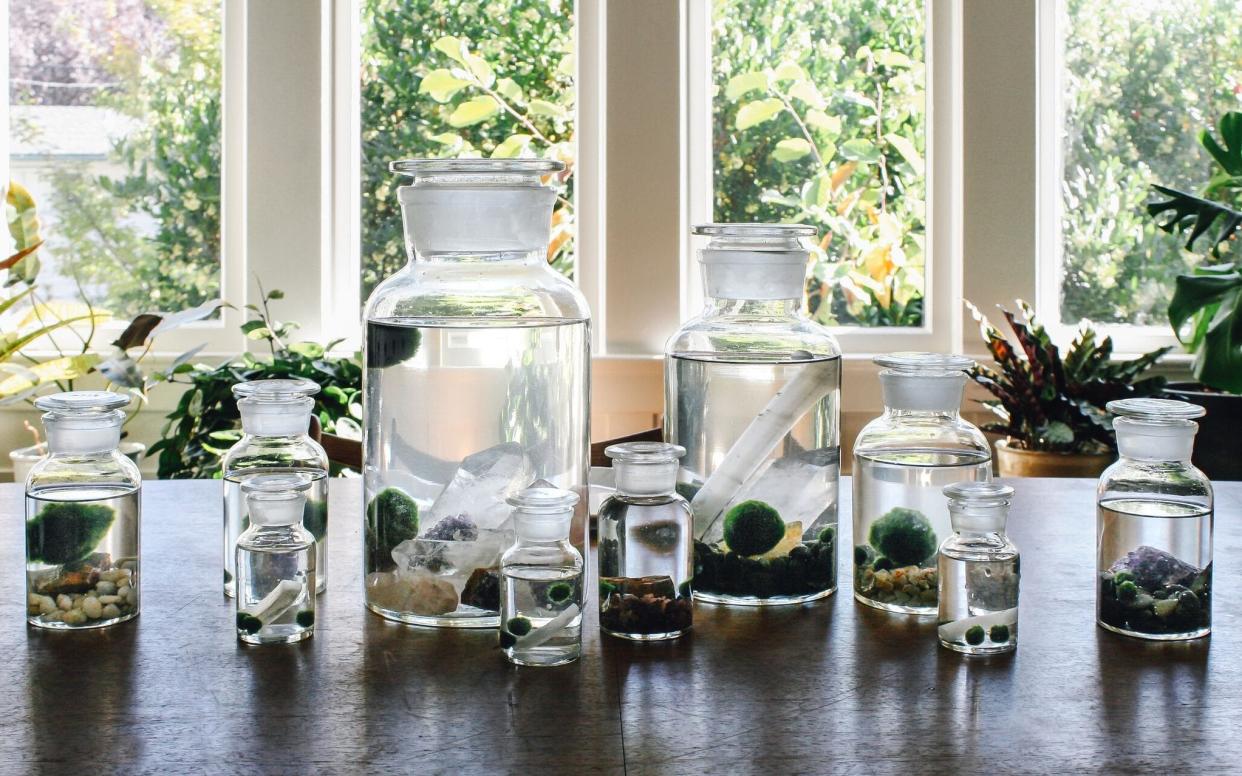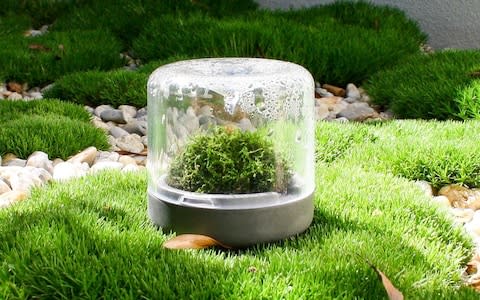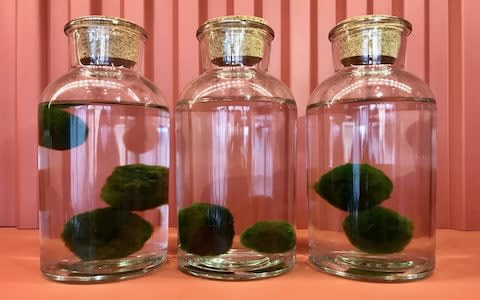Moss mania: Why small space gardeners can't get enough of the green stuff

In mid-December, I went outside with a plastic bag to undertake one of my favourite winter traditions: moss collecting. Although I live next to the woods, these are a conservation area, so I forage instead from the fuzzy, green-slicked brickwork and roofs of the sheds on my housing estate. Never too much from one area – you want to leave enough for the moss to regrow – but a generous handful of a number of different varieties and colours. Hands cold, I took the bag back into the warmth, and emptied its contents onto a little compost in a sturdy glass jar, in which hyacinth bulbs sit.
Now, in the early days of February, the hyacinth blooms have finished and only their sculptural leaves and the moss remain. I like to sit and admire the way it has mingled with the bulbs’ white roots and the tiny leaves of the moss. When daylight is short and nature feels bound under the earth, it offers a convenient portion of green life, perched on a bookcase.
It would seem I am not alone. Houseplant aficionados have started to turn to moss in recent years as a new way of bringing nature into garden-free homes. Moss may seem more banal than the beauty of, say, a fancy tropical plant – but that, and its happy self-sufficiency – is exactly where its appeal lies.
A post shared by London Terrariums©™ (@londonterrariums) on Jan 25, 2018 at 8:17am PST
“I think when we first started making terrariums collecting moss was the best part of it,” says Emma Sibley, founder of London Terrariums, who speaks particularly fondly of her simple “mossarium”, made from a glass bottle.
“I just popped a layer of compost in the bottom, a layer of carpet moss and sprayed it once, left it on my window ledge and then actually forgot about it. When you open the lid you got the most amazing smell of fresh garden, and the moss was so healthy inside.
“From the outside, and to most people, it probably looks quite gross but once you see what’s happening inside you understand. It’s one of my favourite objects!”
While it is heartening that this is one of the indoor houseplant trends that doesn’t come with a huge price tag, moss-appreciation has inspired new plant design. Australian company Botanica.boutique are the front-runners: they crowdfunded the production of their sleek “Sanctuary” terrarium, which was created for desk-based moss appreciation, complete with a lid made with condensation and ventilation in mind.

Both Sibley and Lesley Williams, from Botanica.boutique, encourage people to forage for their own moss. “We use the Bun moss and Carpet moss that you get from Covent Garden Flower Market,” Sibley says, “but I always tell people that moss you get on the lawn or wall is just as good, if not better, as there are so many little spores or seeds tucked away that you never know what will grow out of it.”
Although not technically moss, but algae, Marimo moss balls have also been creeping out of the world of aquatic gardening and fish keeping and into houseplant-lovers’ homes. Natural phenomena found only in the clearest freshwater lakes of Japan and, until recently, Iceland (tourism and septic tanks have had a disastrous effect on the Icelandic ecosystem), these Cladophora balls grow incredibly slowly – around 5mm a year – and look incredibly cute, making them perfect low-maintenance indoor greenery.
Pistils Nursery in Portland, Oregon, has helped usher in the trend, after a staff member hunted them down off eBay in 2010, when they managed to find an uncharacteristically large marimo ball – over six inches wide. “Everyone commented on it,” recalls owner Megan Twilegar. “It was truly a showstopper. Our fascination for marimo has continued since, and our customers are just as fascinated as we are.”

Furry, vibrantly green and gently bobbing, it’s hard not to be taken in by marimo – the locals of the village near the lake where they propagate in Japan hold a festival in their honour each year, and the balls are now nationally protected after theft threatened their existence. “There's something mystical about the spherical shape, slow growth and longevity of these little aquatics,” Twilegar says. “The legend that goes alongside them – of forbidden lovers in feudal Japan whose hearts became Marimo balls – makes them even more appealing.”
That, and the fact that marimo make perfect beginner houseplants: as long as they are not exposed to direct sunlight, and have fresh water once or twice a week, they will be fine. “They were literally the best-selling thing before Christmas,” says Sibley, who stocks marimo in her London Terrariums shop, “they’re just like little pets”.
She advises people keep them in a sealed container – they use corked glass bottles – and, unlike when Pistils were tracking down suppliers, there are now plenty of nursery-grown marimo available online through eBay and aquatic plant retailers.
Alice is the author of How to Grow Stuff: Easy, no-stress gardening for beginners. For more houseplant trends, follow her on Instagram.com/noughticulture.


